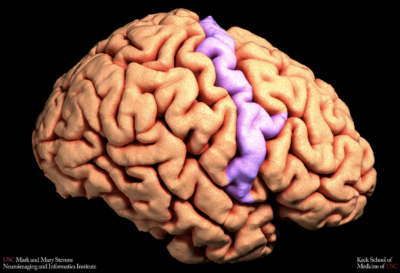Studies at USC’s Stevens Neuroimaging and Informatics Institute (INI) use mice to gain insight into brain structure and function to better understand brain disease and potential treatments.
By Sidney Taiko Sheehan
Cataloguing the brain’s many billions of cells is no small feat, but it’s an ambitious goal of the National Institutes of Health’s BRAIN Initiative. To that end, the BRAIN Initiative launched its Cell Census Network (BICCN) in 2017 with the objective of identifying and cataloguing the cell types in human, monkey and mouse brains.
Now, the BICCN has released two groundbreaking resources: a comprehensive classification of cell types present in the mammalian primary motor cortex, and a detailed atlas of the region. The primary motor cortex is the part of the brain responsible for skilled movement, from typing to tap dancing. In October, Nature released the BICCN collection, which includes more than a dozen associated articles published in its journals. This collective effort of more than 250 researchers includes several years of work from past and present members of the Keck School’s USC Mark and Mary Stevens Neuroimaging and Informatics Institute (USC INI). This work establishes a critical resource to drive clinical investigations into movement disorders such as Parkinson’s and Huntington’s disease.
The INI’s Michael S. Bienkowski, PhD, assistant professor of physiology and neuroscience, is a co-author on two of the BICCN’s selection of Nature papers, as well as a third Nature Communications paper. Bienkowski and his team are making strides toward understanding brain function by establishing a structural framework at the cellular level. This work provides a crucial roadmap toward a comprehensive cellular-resolution description of mammalian brain architecture. The team established an open-access, cross-laboratory anatomical analysis platform of technologies, methods, data analyses, visualizations and more.
“The primary motor cortex was essentially the first step in creating a taxonomy of cell types across the whole brain,” Bienkowski says. “We define cell types in many ways based on their anatomy, connectivity, morphology, gene expression, electrophysiology characteristics and their roles in behavior. To have all these large groups of different neuroscientists from different fields come together and come to a consensus is exciting. It’s going to be really interesting to see this carry forward to other brain regions.”
USC INI Director Arthur W. Toga, PhD, Provost Professor of Ophthalmology, neurology, psychiatry and the behavioral sciences, radiology and engineering, is enthusiastic about these important steps forward. “It cannot be emphasized enough that Bienkowski’s work, along with the rest of the BICCN’s showcased papers, is made possible through intentionally collaborative labor and the substantial breadth of data collection,” says Toga. “This project will continue to touch and innovate all areas of neuroscience and can influence clinical care – the ultimate goal of so many physicians and scientists.”
Now the director of the USC Center for Integrative Connectomics (CIC) within the USC INI, Bienkowski and his team are investigating how different cell types are susceptible to neurodegenerative pathology in Alzheimer’s disease and retinal degenerative diseases. “In Alzheimer’s disease, there is a very clear spread of pathology across neural circuit pathways at progressive disease stages. Being able to identify and classify susceptible brain cell types and their interconnected circuits is critical toward developing effective and specific prevention and treatment strategies with limited side effects.”

